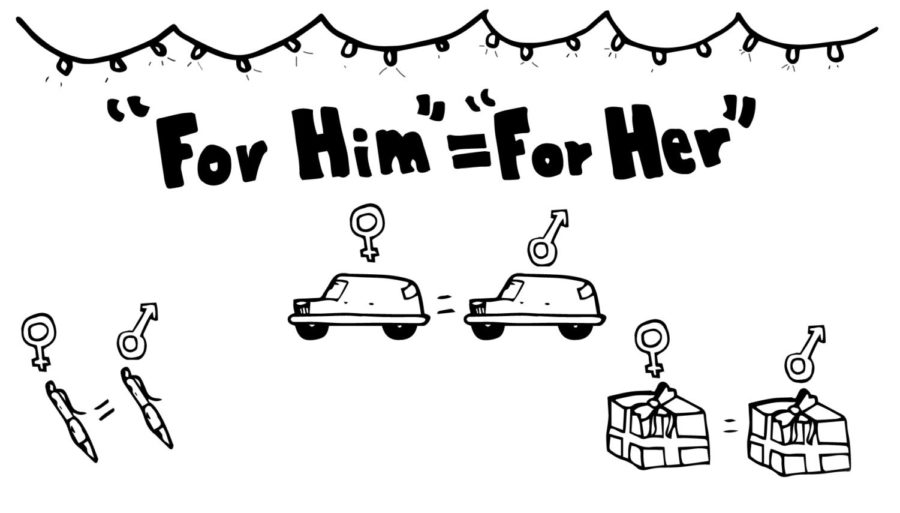Overused and Offensive: Gender Constructs in Ads
December 19, 2018
The season of gift-giving has made its presence with eye-catching advertisements adorned with fluorescent colors, deal-breaking discounts and catchy slogans. However, with the commercial frenzy also comes the re-emergence of offensive gender constructs in gifts marketed to be gender specific.
Explained as market segmentation, the principles behind it are simple: segment the public, target a specific audience and reach the consumer with certain needs or wants. Unfortunately, in the 21st century, carrying out advertisements like this actually becomes counterproductive.
Taking a look at advertisements from Tide or Budweiser in the 1950s, the portrayal of women as stereotypically feminine and needy sheds light on the continuing chain of gender segmentation. Ever since the use of media exploded commercially, the perceived roles of women and men in society have permeated gender constructs in advertising.
“Marketers continue to drop gender stereotypes into ads because they fail to see these stereotypes are by and large outdated and untrue,” Susan Dobscha of Bentley University said in her research article. “Marketers are ignorant to the diversity of preferences among women because they have long used male and female as catchall categories for segmentation.”
Often times companies continue to play to gender constructs to increase the number of buyers. Starting with the “BIC for her campaign” in 2012 that generalized women as needing more feminine pens to the 2017 Audi ad that compared buying cars to a wife, the continuation of gender constructs in media is upsetting. However, many companies still have not realized the shortcomings of gender segmentation.
Research by Tom Meyvis, a professor of marketing at New York University’s Stern School of Business in an interview with Enterprise Innovation, has now proven that removing the gender affiliation with gifts seems to be a popular trend.
By studying the trend with toys affiliated to a certain gender, Meyvis developed a theory that removing gender labels hands more control to customers, allowing them to decide for themselves what the ideal product to buy is rather than being told that there is a specific group a present is designed for.
While associating products with gender has sometimes helped customers choose gifts, it still does not justify the way that some companies use gender constructs to increase profits.
What may seem intuitive seems to be a necessary statement: stop using gender constructs in advertisements.

















